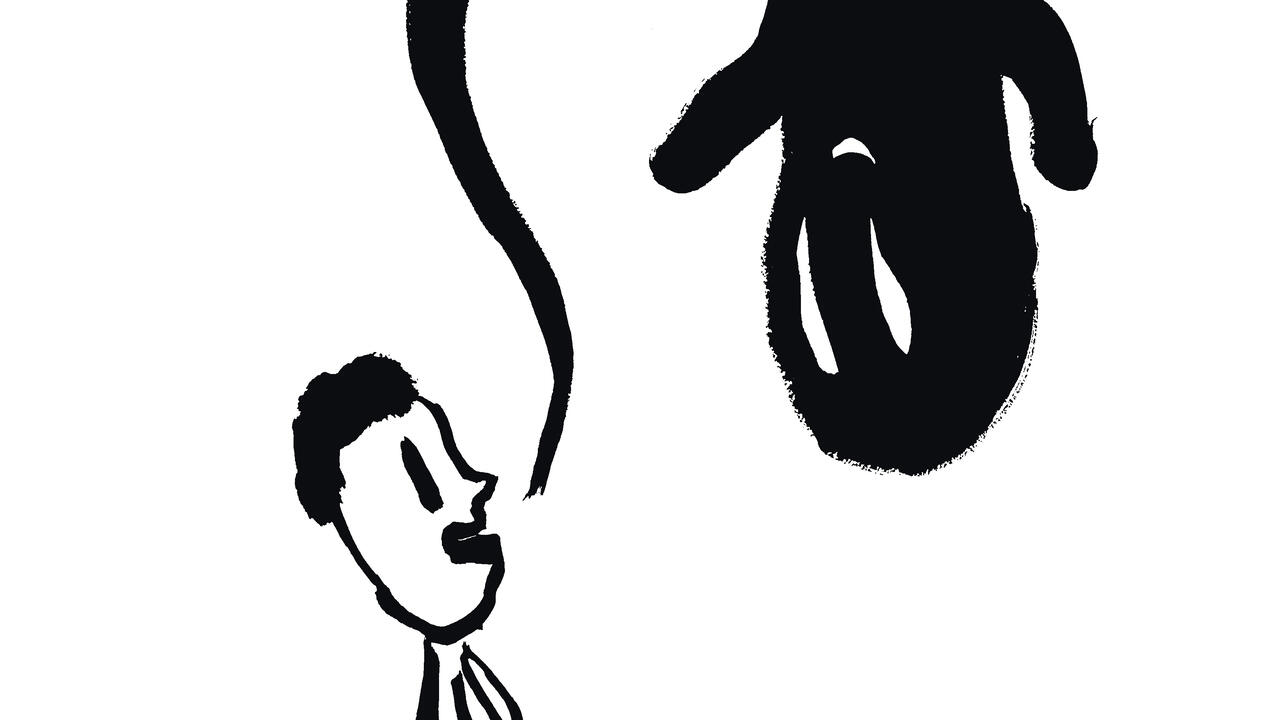Paul Chan
Schaulager, Basel, Switzerland
Schaulager, Basel, Switzerland

In late May this year, a few weeks before travelling to Basel, I went to the newly opened National September 11 Museum in lower Manhattan. Its grim permanent exhibition, on the site of the north tower of the former World Trade Center, refashions that awful day in 2001 through dust-covered artefacts, recordings of emergency calls, hideously twisted airplane parts, and– hidden in an alcove, preceded by a warning sign – wrenching, almost unbearable images of office workers plummeting 100 storeys to their deaths. I had not looked at those images for years, and not out of squeamishness: there is a de facto agreement in the US that such photos should not be shown. Even the most famous one, taken by AP photographer Richard Drew, which shows an unknown victim diving headfirst against the striated facade of the very same north tower on whose footprint I stood, has essentially been embargoed.
It was salutary to see Paul Chan’s significant but lopsided retrospective at the Schaulager in Basel after visiting the September 11 Museum because the Hong Kong-born American artist stands as one of the most trenchant dissectors of the nightmare of the George W. Bush era. His projection series ‘The 7 Lights’ (2005–07), tender and apocalyptic by turns, features animals, automobiles and a Duchampian bicycle wheel floating upwards while human bodies, slowly and all too elegantly, drift in the other direction. Very few American artists over the last decade have risked such literal representations of what we still cannot bear to look at, and when they did (in Jennifer Bartlett’s 2001 painting Goodbye Bill, say, or Bernadette Corporation’s 2003 film Get Rid of Yourself) it was usually through the prophylactic distance of a television screen. If ‘The 7 Lights’ felt a bit less taboo-breaking after my revisiting of those 9/11 photographs, it nevertheless retained the rage, heartbreak and, above all, deracination that so many of us felt during those awful Bush years. Now that we are slowly coming to terms with the ordeals of the last decade, Chan’s show felt, to this New Yorker at least, like a necessary complication and intensification of the US’s look back at our recent wars and retributions.
In his work made during the Bush years, Chan didn’t acknowledge the distinction between ‘autonomous’ and ‘engaged’ art practices, and the continued appeal of his art derives, in part, from its scrambling of our expectations about what ‘political’ art should look like, or how a ‘political’ artist should behave. After the garish early mash-up of folk art and radical forms of social organization in the two-sided, acid-colour animation Happiness (Finally) After 35,000 Years of Civilization (After Henry Darger and Charles Fourier) (2000–03), Chan’s work soon became more explicitly interwoven with the horrendous overreaches of the Bush administration, even as he kept his art at some remove from the activism that got him arrested in 2004 during protests in New York against Bush’s nomination for a second term. In the wake of Hurricane Katrina in 2005, Chan invited the Classical Theater of Harlem to perform Waiting for Godot in the drowned heart of New Orleans (repeating Susan Sontag’s gesture in war-torn Sarajevo in 1993). Bluntly site-specific, the performance insisted upon the consequences of Bush’s policies on bodies both American and foreign – a theme introduced in ‘The 7 Lights’ and carried through in Sade for Sade’s Sake (2009), his disturbing shadow play that combines images from Abu Ghraib with sadistic or pornographic imagery from Pier Paolo Pasolini’s Saló (1975).
But Chan’s work has deteriorated abruptly in the last few years, since he proclaimed he was ‘retiring’ as an artist in 2010 and devoting himself to his quixotic publishing endeavour, Badlands Unlimited. In the Schaulager, whole rooms of electrical cables, some plugged into shoes filled with cement, express a hackneyed and surprising nostalgia for community in a pre-electronic age. The more than 1,000 painted book covers that he has destroyed (Volumes, 2012) gain nothing from their abundance, and display a curious deafness on the part of an artist/publisher to the endurance of print media and the corporate and legal constrictions that make digital distribution anything but free. Worst of all is New New Testament (2014), a hulking compendium of the Volumes paintings printed alongside baffling nonsensical phrases and punctuation marks. For an artist who spoke in such a muscular present tense during the Bush decade, this recession into dadaist poetic strategies comes as a particular letdown. The ungenerous conclusion would be that Chan required the cartoon villainy of Bush and his cohort to produce his best work, and that in a more discreetly violent age of drones he can’t maintain his grasp. Or maybe, like so many other Americans, he has simply grown exhausted by the grim realities of our political sphere, and decided that the only possible response to our inexorable decline is 1,000 pages of gibberish.





















